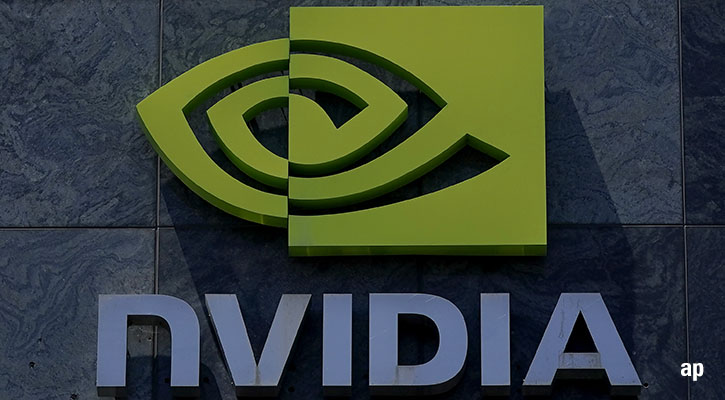
Wide-moat Nvidia (NVDA) continues to fire on all cylinders as the firm reported fiscal second-quarter results and a third-quarter forecast that were ahead of our prior expectations and FactSet consensus estimates.
Key Morningstar Metrics for Nvidia
• Fair Value Estimate: $105
• Morningstar Rating: 3 stars
• Morningstar Economic Moat Rating: Wide
• Morningstar Uncertainty Rating: Very High
Our confidence in Nvidia remains, as the company is still prospering from insatiable demand for graphics processors, or GPU, and related products used in data centers to run artificial intelligence. However, Nvidia’s earnings beat wasn’t as eye-popping as in quarters past, which may explain why shares fell after hours.
Nvidia Revenue Up 122% on Last Year
We maintain our $105 per share fair value estimate. In the near term, we still assume that Nvidia will increase its data center, or DC, revenue by a few billion per quarter as additional GPU production capacity comes online. Yet our fair value estimate is mostly driven by our longer-term assumptions for AI adoption and robust DC spending by Nvidia’s key AI customers. We maintain our Very High Morningstar Uncertainty Rating as both assumptions will be opaque and may shift in the years ahead.
Revenue in the July quarter was $30 billion, up 15% sequentially, up 122% year over year, and ahead of guidance of $28 billion. DC revenue was $26.3 billion, up 154% year over year. Even with Nvidia’s next-generation Blackwell products arriving later this year, the firm saw no slowdown in demand for its existing Hopper family of products. Nvidia expects to earn “several billions” of Blackwell revenue in its fiscal fourth quarter ending January 2025. In the meantime, management anticipates that Hopper shipments and revenue will still see growth in the second half of fiscal 2025, as customers won’t pause their purchases of Hopper while waiting for Blackwell.
Nvidia expects October-quarter revenue to be $32.5 billion, which would be up 8% sequentially and 79% year over year. Nvidia’s key AI customers still intend to invest heavily in AI capital expenditure, and we still expect Nvidia to reap most of the rewards of such spending.
Looking Ahead to Nvidia’s 2026
In the second half of fiscal 2025, and based on third-quarter guidance, we model another $3 billion of DC revenue growth to $29.4 billion in the third quarter. We estimate $4.4 billion of incremental DC revenue in the fourth quarter (ending January 2025) to $33.8 billion. This fourth-quarter forecast is above our prior estimates, as Nvidia will not only see Hopper growth, but will also layer Blackwell revenue on top of Hopper. As we look ahead to fiscal 2026 — which is effectively calendar 2025 — we still foresee incremental revenue growth, quarter by quarter, as more and more GPU supply comes online.
We still view Nvidia as the clear-cut leader in GPUs and related software (CUDA) used for AI training and don’t believe the company has serious competition in AI training today. Yet we remain encouraged by management’s position that 40% of its GPUs are being used for AI inference, which is a piece of the AI market that should be larger, and more competitive, than training over time.
Looking at the makeup of DC revenue, sales into China grew sequentially and represented a “significant” portion of DC revenue despite severe US regulations that restrict the company from selling anything close to its most powerful processors to Chinese AI customers. Still, Nvidia conceded that China’s proportion of DC revenue remains far below prerestriction levels of 20% or so.
Nvidia also thinks that DC revenue from sovereign governments will exceed $10 billion this year, up from a prior estimate of “high single digit billions” announced last quarter. We’re encouraged by the higher outlook and tend to think that such revenue might be stickier in the long run as it won’t hinge on a government’s ability to generate AI revenue.





























